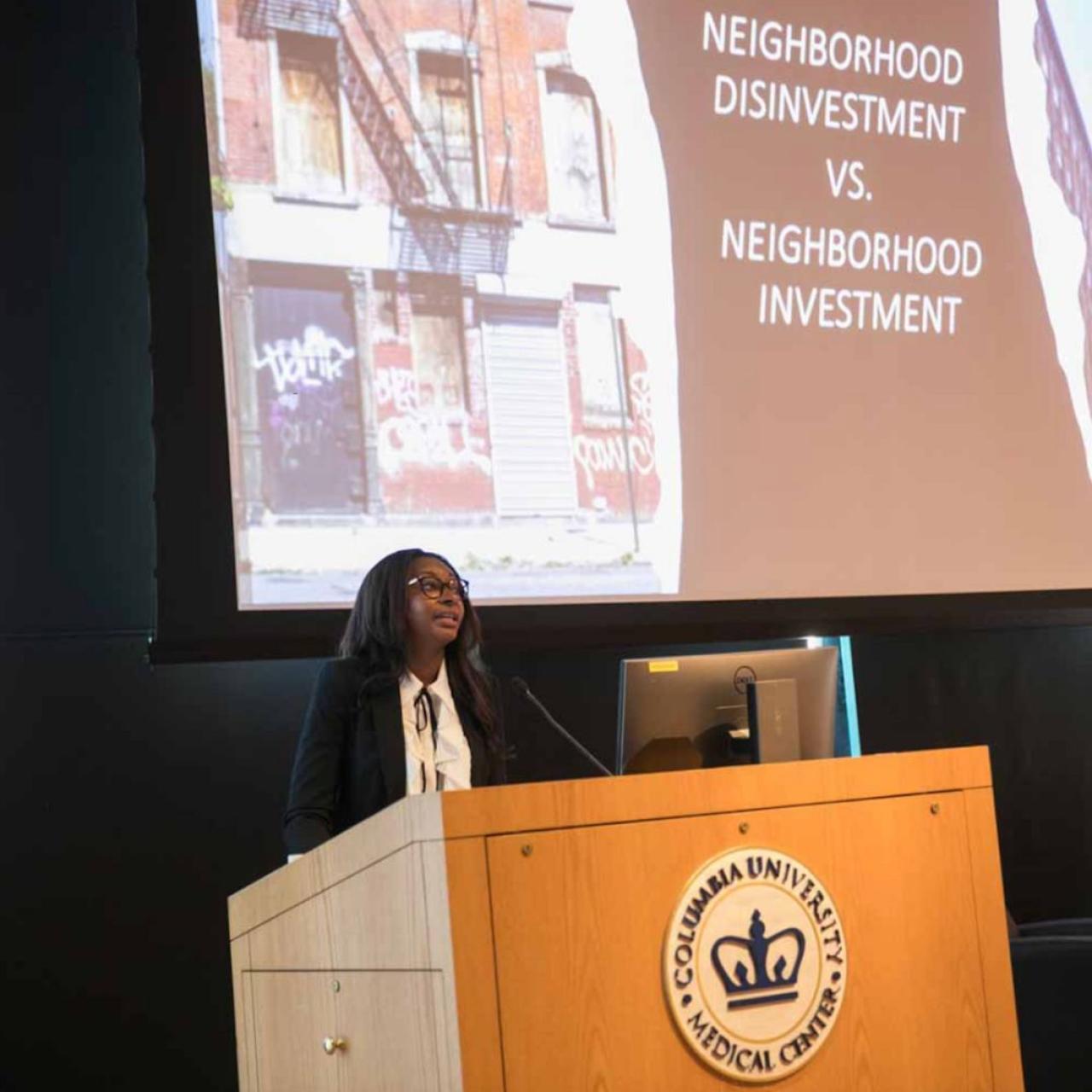
Adana Llanos, PhD, MPH, a cancer and molecular epidemiologist and health equity scholar, has been selected as the new co-leader of the Cancer Population Sciences program.
Adana Llanos, PhD, MPH, comes from a family where the risk of breast cancer is high, even from an early age. As a Black woman and cancer epidemiologist, she is acutely aware of the pronounced racial inequities in breast cancer outcomes. Black women are more likely than white women to die of breast cancer at any age, and for those under 50, Black women have double the rate of mortality.
"Women in my family have been diagnosed with breast cancer as young as age 28. That shouldn't be happening," says Dr. Llanos, associate professor of epidemiology at the Mailman School of Public Health at Columbia. "I'm really interested in studying populations that have been historically underrepresented in cancer research, including people that look like me."
Her mission is to improve cancer survival among such vulnerable populations by untangling the molecular and sociobiologic mechanisms behind cancer inequities. On March 1, Dr. Llanos was appointed as co-leader of the Cancer Population Science Research program at the Herbert Irving Comprehensive Cancer Center (HICCC), which aims to reduce the burden of cancer on a population level. She will help guide the direction of the program in collaboration with co-leaders, Dawn Hershman, MD, MS, FASCO and Chin Hur, MD.
Despite cancer disproportionately impacting racial and ethnic minority and medically underserved groups, they remain underrepresented in many research studies. The Llanos lab mainly focuses on these populations to develop interventions and strategies for cancer prevention and control that could have an outsized impact. She often conducts community-engaged research, working closely with community members to hear their perspective on how to address cancer inequities.
A more recent area of her research focuses on the disproportionate burden of chemical exposures from personal care products in some groups. In a 2017 study, Dr. Llanos and her colleagues reported that the use of dark hair dye shades was associated with 51 percent increased overall risk of breast cancer among Black/African American women.
"There have been many studies linking hair dye with breast cancer, but ours was the first to include a large sample of Black and African American women," she says. "The majority of studies prior focused on white women, and this had just never been done in a sample that included a large number of Black women, so it generated a lot of interest."
Later, the Llanos lab investigated the possible effects of hair dye and relaxer use on breast tumor features. In 2022, the researchers found that long-term use of both products were associated with more aggressive tumor features - hair dye with higher tumor grade and relaxer with larger tumors.
"Black women are the largest consumers of hair products and cosmetics per capita in the U.S.," says Dr. Llanos." When you look further at the products that are marketed to us and our children, you find that many of these products contain really toxic ingredients."
Now, Dr. Llanos has expanded this work to Kenya through a 2022 grant from the ICAP-HICCC Cancer Initiative (IHCI), which awards recipients $30,000 to conduct one-year pilot research projects that aim to address major gaps in cancer screening, prevention, and management in low- and middle-income countries. The international collaboration stemmed from discussion with fellow researchers at the African Caribbean Cancer Consortium (AC3) biannual meeting.
She has collected data on personal care product and hair product use, as well as perceptions of use, among women in two Kenyan counties with rising breast cancer rates. One big-picture goal of the project - both in Kenya and the U.S. - is to push the government to enact tougher regulations in terms of what chemicals can go into these products.
"Interventions that can have an impact at the population-level - like policy change and interventions impacting whole communities - would have a broader impact than ones that target individuals alone," she says. "Ultimately, I hope my research leads to evidence-based strategies to improve cancer outcomes so that we can move the needle towards greater health equity."






